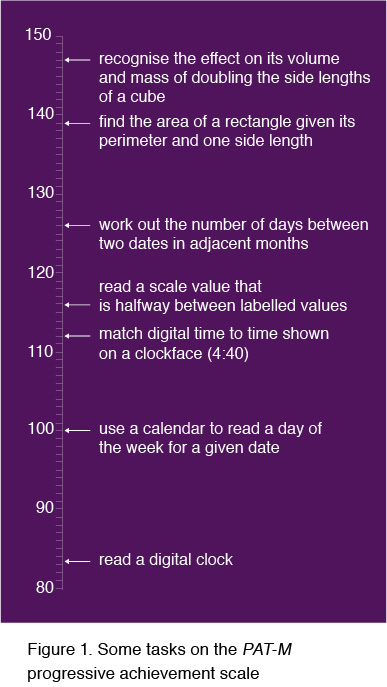
Mapping learning progress: Progressive achievement scales
Research 22 Aug 2016 3 minute readMapping the learning progress of students through data collection is essential to schools, Professor Geoff Masters writes.
Mapping learning progress: Progressive achievement scales
Collecting educational data serves three vital purposes in schools:
- to establish where students are in their learning
- to monitor student improvement, and
- to evaluate the effectiveness of interventions.
These uses of data in school education all require an appropriate frame of reference for interpreting data.
Map of learning
A useful analogy is the monitoring of a person’s journey through physical terrain. To establish and understand where a person is on their journey at any given time, and to monitor the progress they are making, an understanding – ideally a map – is required of the terrain through which they are travelling.
In much the same way, to establish where students are in their learning, to monitor progress over time and to evaluate the effect of interventions on learning progress, a ‘map’ is required of the learning domain through which students are progressing.
A map makes it possible not only to monitor progress, but also to describe what progress looks like. It does more than locate a person in terms of numerical coordinates; it describes the kinds of observations that can be expected at that point in a person’s progress.
A map of a learning domain describes increasing levels of knowledge, skill and understanding.
The fundamental purpose of assessment is to establish where students are in their long-term progress through such a domain.
Example: ACER’s progressive achievement scales
The progressive achievement scales that ACER has developed in reading, mathematics and several other learning areas are examples of ‘maps’ of learning domains.
The map that underpins the Progressive Achievement Tests in Mathematics (PAT-M) is below:

Increasing mathematics achievement is reflected in progress up the scale. A small number of PAT-M tasks are shown here and, when read from the bottom up, give a sense of students’ increasing skill levels in one aspect of mathematics: using units of measurement.
When schools use ACER’s Progressive Achievement Tests, they are provided with information about where individuals are in their learning progress:
- quantitatively – as a position on a numerical scale, and
- qualitatively – in terms of the kinds of skills demonstrated at that level of achievement.
When schools test on more than one occasion, they can measure the progress – or growth – of students over time. And, by comparing rates of growth, schools are able to evaluate the effectiveness of different teaching strategies and interventions.
All three uses of PAT data play an essential role in effective teaching and learning.
Further information:
Read the full article, ‘Mapping progress: Using data for teaching and learning’, in International Developments – Issue 6 or Teacher magazine.
Learn more about ACER's Progressive Achievement Tests.